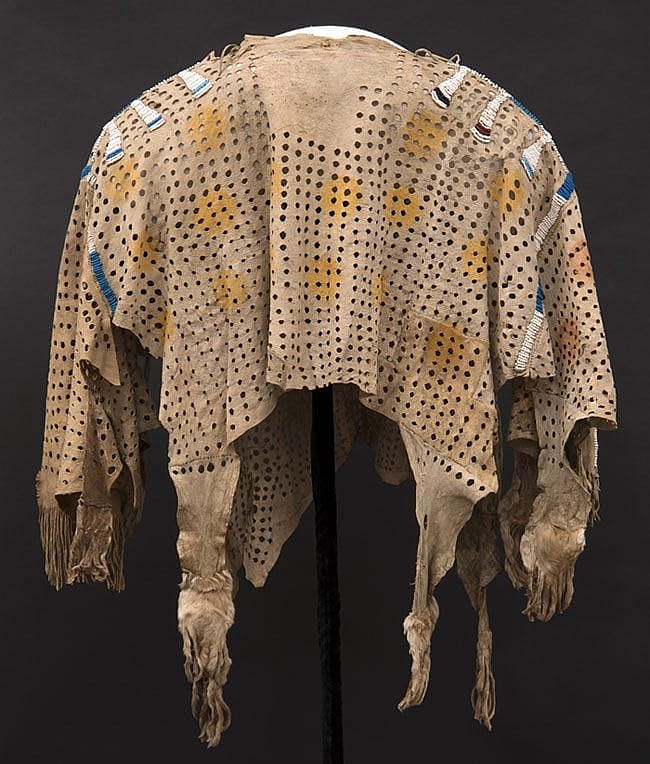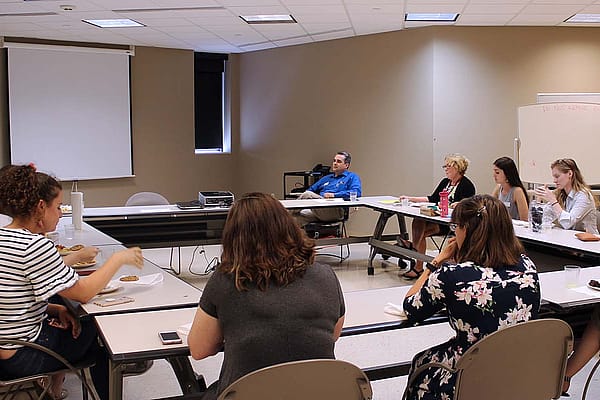
New Buffalo Culture Gallery opens at Buffalo Bill Center of the West
From the moment the collection entered the building, Buffalo Bill Center of the West personnel could hardly wait to share the Paul Dyck Plains Indian Buffalo Culture Collection—now that day has finally come. The Dyck Collection went on public view in its permanent exhibit space in the Center’s Plains Indian Museum on June 15.
From its acquisition in 2007, the Center’s Plains Indian Museum staff quickly set about the task of unpacking, recording, researching, and caring for these objects of the Native peoples of the Great Plains dating back to a period that artist Paul Dyck identified as the “Buffalo Culture” era, the late 1700s to pre-1890s. The new Paul Dyck Plains Indian Buffalo Culture Gallery now provides a space dedicated solely to the collection’s display, and opens with more than eighty objects on view, many of them masterworks from the early 1880s.
Coinciding with the Center’s 32nd Annual Plains Indian Museum Powwow, the new gallery explores the relationship between art, culture, and environment for Plains Indian peoples at a critical period in their history. With Powwow celebrating today’s Native culture, arts, and music, the weekend offers a unique opportunity to experience the Plains Indian heritage that has shaped—and continues to shape—the American West.
Plains Indian Museum Curator Emma Hansen says “The Dyck Collection has long been considered by art historians, ethnologists, and historians to be the most comprehensive privately-held assemblage of Plains Indian arts and related historical materials documenting the lives and cultures of Native people of the Great Plains.” The extraordinary collection, started by Dyck’s father in 1886, includes clothing, eagle feather bonnets, bear claw necklaces, buffalo hide tipis and tipi furnishings, shields, cradles, peace medals, moccasins, and more.
“In addition to their intrinsic artistry and creativity,” Hansen continues, “the works in this collection are powerful expressions by Plains Native artists of their cultural knowledge and understandings, values and traditions, biographical and historical experiences, and a spirituality that guides all aspects of life.” The objects on view in the gallery will be rotated periodically to show more from the expansive collection in the upcoming years.
Completion of the new gallery and plans for a future traveling exhibition were facilitated by grants received by the Center last year, including $10,000 from the Wyoming Humanities Council, $40,000 from the National Endowment for the Humanities, and $28,000 from the National Endowment for the Arts.
Grants also helped fund the initial processing of the Dyck Collection after its 2007 acquisition. The Plains Indian Museum received $350,000 from the Save America’s Treasures program administered by the National Park Service. That award was used to fund research, cataloging, and conservation of the collection’s more than 2,000 artifacts. A small preview with a dozen objects was placed on exhibit in 2008, the first time any part of the collection had been on public view.
The Paul Dyck Plains Indian Buffalo Culture Collection was acquired through the generosity of the Dyck family and additional gifts of the Nielson Family and the Estate of Margaret S. Coe. The Wyoming Humanities Council, the Margaret A. Cargill Foundation, and Deborah and Rusty Rokita supported the creation of the Paul Dyck Plains Indian Buffalo Culture Gallery. Click here to read more about the collections of the Plains Indian Museum.
Images: These three objects are among the more than 80 on exhibit in the new Paul Dyck Plains Indian Buffalo Culture Gallery, opening June 15 in the Plains Indian Museum of the Buffalo Bill Center of the West in Cody, Wyoming. Credit for all images: The Paul Dyck Plains Indian Buffalo Culture Collection was acquired through the generosity of the Dyck family and additional gifts of the Nielson Family and the Estate of Margaret S. Coe. The Wyoming Humanities Council, the Margaret A. Cargill Foundation, and Deborah and Rusty Rokita supported the creation of the Paul Dyck Plains Indian Buffalo Culture Gallery.
- Shield, Kiowa, Southern Plains, ca. 1825 – 1850. Buffalo rawhide, bald eagle feathers, pigment, wool cloth, sinew. NA.108.131
- Bear claw necklace, Central Plains, ca. 1860. Otter hide, grizzly bear claws, glass beads, abalone shells, red ochre, porcupine quills. NA.203.1585
- Shirt. Ni-mii-puu (Nez Perce), Plateau, ca. 1850. Tanned hide, pigment, glass beads, human hair, sinew. NA.202.1.1209
Since 1917, the Buffalo Bill Center of the West has been committed to the greatness and growth of the American West, keeping western experiences alive. The Center, an affiliate of the Smithsonian Institution, weaves the varied threads of the western experience—history and myth, art and Native culture, firearms, and the nature and science of Yellowstone—into the rich panorama that is the American West.
For additional information, visit centerofthewest.org or the Center’s page on Facebook.
Written By
Nancy McClure
Nancy now does Grants & Foundations Relations for the Center of the West's Development Department, but was formerly the Content Producer for the Center's Public Relations Department, where her work included writing and updating website content, publicizing events, copy editing, working with images, and producing the e-newsletter Western Wire. Her current job is seeking and applying for funding from government grants and private foundations. In her spare time, Nancy enjoys photography, reading, flower gardening, and playing the flute.











